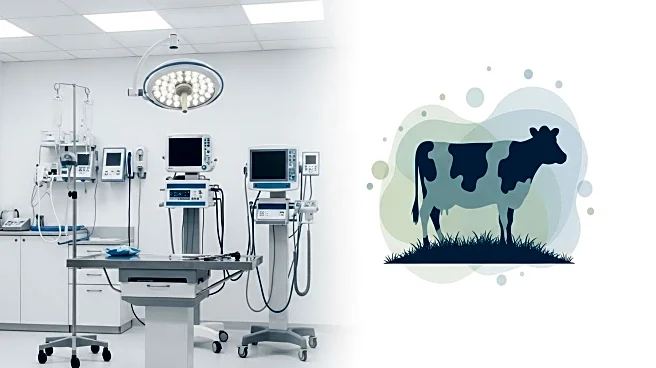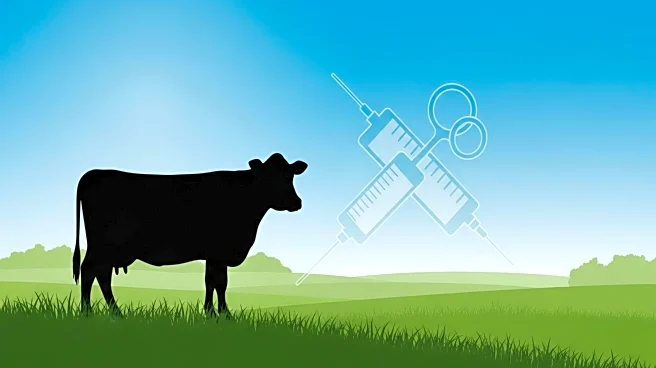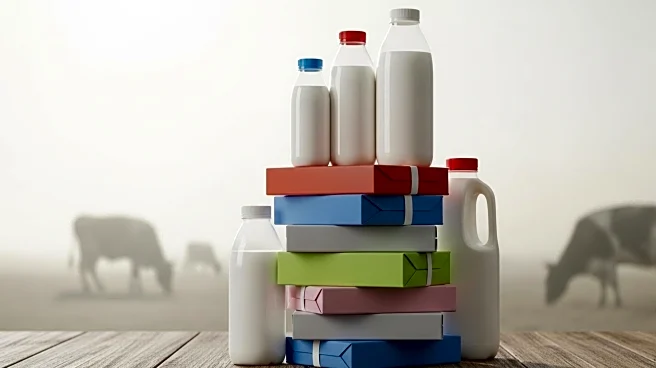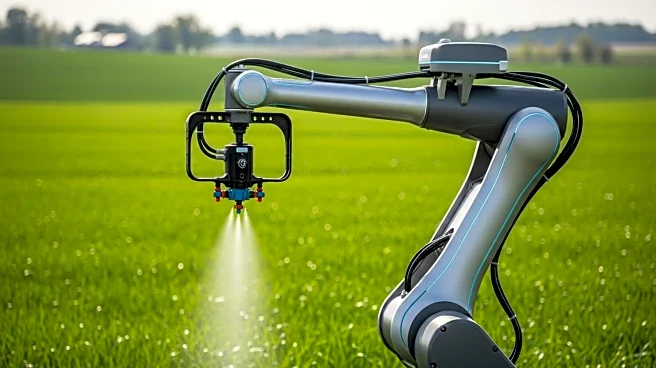What is the story about?
What's Happening?
At the 2025 World Dairy Expo, Boehringer Ingelheim veterinarian Jen Roberts discussed advancements in mastitis treatment for dairy cows. The focus is on distinguishing between infection and inflammation to guide antibiotic use. By culturing each case of mastitis, producers can determine if antibiotics are necessary, reducing antibiotic use by about two-thirds. This approach involves treating only Gram-positive infections with short-duration antibiotics, as Gram-negative infections often resolve without treatment. The strategy aims to improve animal health and reduce costs associated with milk discard during treatment.
Why It's Important?
This development is significant for the dairy industry as it promotes responsible antibiotic use, addressing consumer concerns about antibiotic residues in milk. By reducing unnecessary antibiotic treatments, producers can lower costs and increase milk production, enhancing profitability. The approach also supports antimicrobial stewardship, which is crucial for public health and maintaining consumer trust in dairy products. The strategy aligns with broader efforts to ensure a safe and sustainable food supply.
What's Next?
The implementation of these protocols requires farms to consistently collect and culture samples, which may necessitate investment in on-farm culture systems or partnerships with nearby labs. As the industry adopts these practices, it could lead to widespread changes in mastitis management, potentially influencing regulatory standards and consumer perceptions. Continued research and education will be essential to support the transition and optimize treatment protocols.
AI Generated Content
Do you find this article useful?













